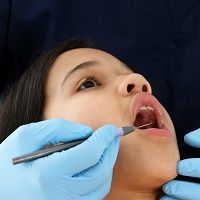As Ethnic Disparities Persist, Dentists Urged to Grow Cultural Competencies
As the Hispanic population grows, so too do disparities in oral health. One expert says dentists need to do more to reach out to Hispanics.

The dictionary defines “disparity” as a lack of similarity or equality. In other words, inequality.
A Google search drills even deeper, where vocabulary.com states “disparity usually refers to a difference that is unfair.”
It would seem “unfair” indeed that, according to Ralph Fuccillo, president of the DentaQuest Foundation, referencing the Surgeon General’s Report on Health for 2000, early childhood oral diseases are five times more prevalent than asthma in children.
And Hispanic children, Fuccillo emphasizes, are at even greater risk.
“Hispanic children suffer the burden of childhood diseases at a greater rate than other populations,” says Fuccillo, noting that close to 80% of Caucasian children reach age 5 without a cavity. “I believe Hispanic children are in the 40% range.”
Barriers Are Evident
Much of the reason for the disparity, Fuccillo says, is the makeup of the Hispanic community, which is composed of people from many countries and diverse cultural backgrounds. As such, the biggest barrier to oral health equity is often language.
“There’s a gap in the number of Spanish-speaking dental providers,” Fuccillo says. “But there are also other life conditions. Sometimes it’s a geographic barrier, or socioeconomic differences.”
And then there are family and cultural norms—traditions about how to stay healthy. Fuccillo tells the story of his grandmother being an immigrant from Italy, and how she always had pearly white teeth thanks to her use of baking soda.
“I don’t know what dentists think about baking soda, but that cultural tradition was one that she adhered to,” Fuccillo says. “When you get into all these new technologies, new products, all of those kinds of things—how are those introduced to the Hispanic community? Do they resonate with the cultural norms of the family? Those are the kinds of things that we have to look at if we’re thinking about raising the equity level.”
Lifestyle and work are also key issues. Fuccillo explains that in some areas in the western US there are large Hispanic communities of migrant workers where the lifestyle-work process doesn’t allow for families to go to one dentist.
“It becomes extremely difficult to have one dental home.”
Educational Opportunities
Fuccillo says that when it comes to educating the Hispanic population, social learning theory must be considered. This theory states, in part, “learning is a cognitive process that takes place in a social context and can occur purely through observation.” That means peer groups, whether it’s a language peer or geographic peer, play a significant role in the way people learn.
In that regard, Fuccillo says that cross-cultural communication is an important component dentists and their practice staff need to consider.
“Does the dentist have any sense or background in how people want to be greeted at the office?” Fuccillo asks, rhetorically. “We know about the importance of eye contact or touch. All of those dynamics are part of the dentist being sensitized to cultural cognitive training. Not every patient is the same.”
Five years ago, the DentaQuest Foundation embarked on a national systems-changing strategy. It’s first two goals are that by 2020, 75% of all children will reach the age of 5 without a cavity; and that the 10 largest school districts will have incorporated oral health into their systems.
“We wish that number could be higher,” Fuccillo says. But with Hispanic children hovering around 40% and American Indian children at 23% compared to the 80% among Caucasian children, the goal is about closing that gap.
Economics at Work
The Hispanic community has experienced the largest growth among the general US population over the last 15 years. According to Pew Research, the Hispanic population reached a new high of 55.4 million in 2014, or 17.4% of the total U.S. population.
“We think it’s going to be 43% of the general population in 2020,” Fuccillo says.
As such, he believes that recognizing and addressing this population change is a business imperative.
“You have to think about who your patients are,” Fuccillo says. “And enabling patients to be able to interact with you. Certainly you should be concerned about whether there are economic disparities, be concerned about whether there are enough outlets for patients to access.”
That means, Fuccillo adds, that dental providers may need to change the way they practice.
“As new people come into your community, hopefully you’ll understand the way that those economics work and establish the right touch.”